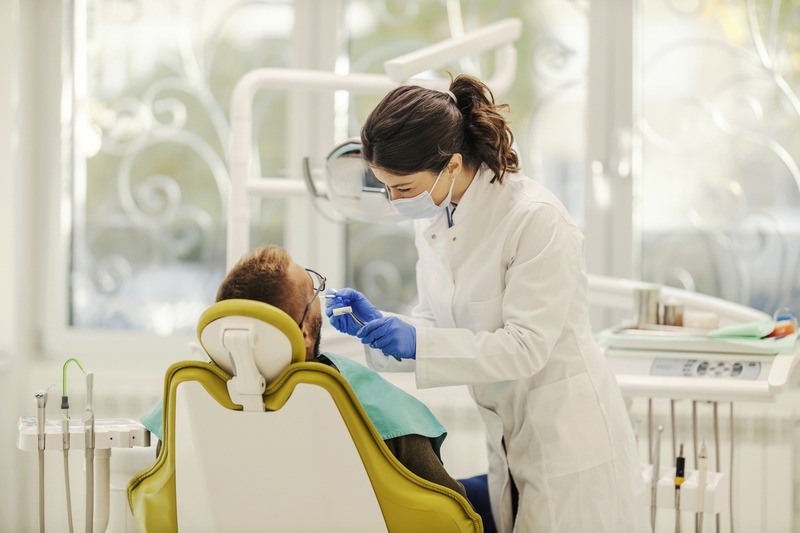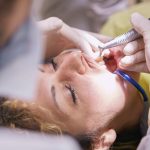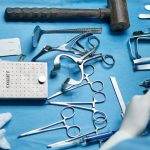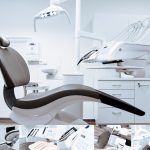
When you visit a dentist, it’s natural to expect a routine checkup, but have you ever wondered what exactly goes on during a comprehensive dental exam? It’s more than just poking around to see if you need a filling. A thorough dental exam is the first line of defense in maintaining good oral health and catching potential issues before they become big problems. Let’s unfold what a comprehensive dental checkup entails and how it’s an integral part of your overall health journey.
1. Initial Visual Examination
Your dental visit usually starts with a visual examination. Here’s what your dentist is looking for:
-
Signs of Tooth Decay and Fillings: Your dentist looks for evidence of tooth decay, including cavities and damage to existing fillings, to address them promptly and prevent further deterioration.
-
Gum Health: Your dentist evaluates your gums for signs of inflammation, bleeding, or recession, which may indicate gingivitis or gum disease requiring treatment and preventive measures.
-
Bite and Jaw Alignment: Assessing your bite and jaw placement helps identify issues such as misalignment, malocclusion, or temporomandibular joint (TMJ) disorders that may impact oral function and require intervention.
-
Oral Abnormalities: Your dentist checks for any abnormalities, such as cysts, tumors, or signs of oral cancer, through visual inspection and palpation of the oral tissues, enabling early detection and appropriate management if necessary.
Using tools like mouth mirrors, explorers, and probes, dentists get an up-close look at every surface in your mouth. They can spot teeth misalignment and provide options for correction.
When considering how to straighten your teeth, the decision often comes down to making the right choice between Invisalign and traditional braces. Both options have their pros and cons. Invisalign has the benefit of being almost invisible, while braces are more noticeable but may be necessary for more complex dental issues. Your dentist will help you navigate the advantages and challenges of each, ensuring that your decision aligns with your lifestyle and dental needs.
2. Digital Diagnostics
After the initial check comes the technical part:
-
Digital X-Rays: These advanced imaging techniques allow your dentist to see beyond the surface, capturing detailed images of your teeth, roots, and jawbone beneath the gum line. Digital X-rays provide valuable insights into issues like cavities, bone density, and root structure, aiding in accurate diagnosis and treatment planning.
-
3D Imaging: Three-dimensional imaging technology is utilized for complex cases and precise implant planning. This innovative approach creates detailed, panoramic views of your oral structures, offering comprehensive insights into bone morphology, tooth positioning, and surrounding anatomical features. 3D imaging enhances the accuracy of diagnosis and treatment, particularly in procedures such as dental implant placement and orthodontic planning.
-
Intraoral Cameras: These small, handheld cameras provide a real-time view inside your mouth, allowing you to see exactly what your dentist sees. Intraoral cameras capture high-definition images of teeth, gums, and oral tissues, facilitating patient education and collaboration in treatment decisions. By visualizing potential issues up close, patients gain a better understanding of their oral health and treatment options.
This technology helps identify hidden issues and is essential for an accurate assessment. If you are having trouble with misaligned teeth, your dentist might recommend Invisalign.
If you’re thinking about straightening your teeth, you’ll want to meet your Invisalign provider. An Invisalign dentist specializes in this clear aligner system, which can correct a myriad of bite and alignment issues without the noticeable look of traditional braces.
3. Gum Health and Cleaning
The condition of your gums is a big deal because it can affect not only your teeth but your overall health. Dental professionals measure the depth of the space between your teeth and gums—called periodontal pockets—to diagnose the health of your gums. If necessary, they’ll remove any plaque and tartar buildup through a process called scaling and root planing. This not only keeps your gums healthy but also polishes your teeth and freshens your breath.
4. Assessment of Your Oral Appliances
During your dental visit, your existing oral appliances, such as bridges, crowns, or dentures, undergo a thorough assessment to ensure optimal fit and function. Here’s what the examination entails:
-
Fit Evaluation: Your dentist assesses the fit of your oral appliances to ensure they snugly and comfortably adhere to your teeth or gums. Proper fit is crucial for stability and effectiveness, preventing issues such as slippage, discomfort, or irritation.
-
Functionality Check: Each oral appliance is evaluated for its functionality in performing its intended purpose. Bridges should restore missing teeth and maintain proper occlusion, crowns should protect and strengthen damaged teeth, and dentures should facilitate chewing, speech, and aesthetics. Any functional issues are addressed to ensure optimal performance.
-
Identification of Problems: Your dentist identifies any signs of wear, damage, or deterioration in your oral appliances. These issues, if left unaddressed, can lead to complications such as decay, gum irritation, or loss of function. Prompt identification allows for timely repairs or replacements to maintain oral health and functionality.
5. Oral Cancer Screening
One of the most significant components of a comprehensive exam is the oral cancer screening. Your dentist will look for any signs of abnormal tissues or other indicators of potential concerns. It’s a quick but potentially life-saving part of the dental checkup.
6. Creating Your Treatment Plan
The final step of a comprehensive dental exam is putting all the pieces together into a treatment plan. This is where your dentist combines their findings with your personal oral health goals to create a roadmap for your dental care. It’s not just about fixing immediate problems; it’s about setting you up for long-term oral health success.
A big part of comprehensive dental services is the personalized care that you receive. Discover the difference at this Spotsylvania dental practice, where every aspect of your oral health is considered to craft a care plan that’s uniquely yours.
7. Schedule Your Next Visit
One last piece of advice before you leave the dentist’s office: schedule your next appointment. Depending on your oral health status, it could be in three months, six months, or a year. Sticking to a regular dental visit schedule is crucial to prevent potential issues from escalating.
Final Thoughts
Ensuring optimal dental health is essential for overall well-being. Your local dental practice offers expert care to maintain your bright, healthy smile for years. From routine check-ups to specialized treatments, their professional team is dedicated to your dental needs. By investing in regular dental visits and following recommended oral hygiene practices, you not only enhance your smile’s appearance but also prevent potential oral health issues, promoting long-term wellness and confidence in your dental health journey.























































